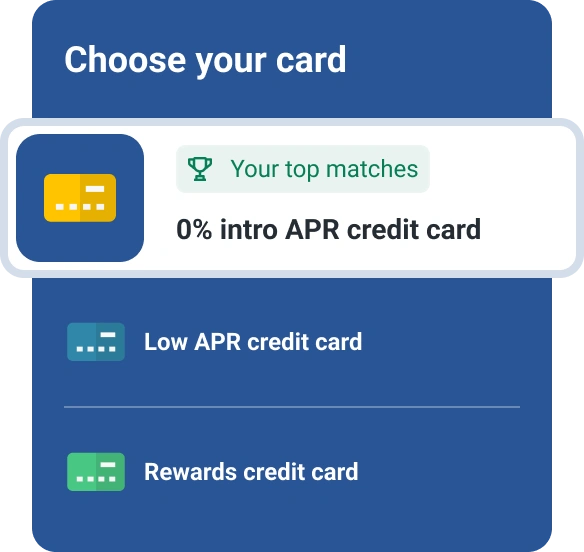What Is a Low Interest Credit Card?
Quick Answer
A low interest credit card offers a lower-than-average annual percentage rate (APR). While paying off your credit card in full each month can help you avoid interest charges altogether, a low interest credit card can be beneficial if you carry a balance from month to month.

A low interest credit card offers an annual percentage rate (APR) that is lower than the average rate.
Of course, you can avoid interest charges altogether by paying your credit card balance by your due date each month. But if you tend to carry a balance from month to month, a low interest credit card could be a good option to reduce your interest charges and make it easier to pay off your credit card. Here's what you need to know.
How Low Interest Credit Cards Work
According to Federal Reserve data from August 2023, the average credit card rate is 22.77%, so any credit card offering a lower APR could be considered a low interest credit card. Some credit cards have standard APRs several points lower than this average, with some even going so far as to offer a 0% introductory APR on new purchases, balance transfers or both for up to 21 months.
Generally, you'll need good to excellent credit to qualify for a low interest credit card. These cards work just like other credit cards but enable you to pay less in interest charges if you carry a balance. If possible, establish a habit of paying your entire balance on time each month to avoid interest charges. However, if you must carry a balance, it's reassuring to know you'll pay less in interest with a low interest credit card.
How to Choose a Low Interest Credit Card
When you are ready to get a low interest credit card, take the following steps to improve your odds of approval and ensure you apply for the credit card that best suits your needs.
1. Check Your Credit Score
To find the best low interest credit card, start by checking your credit scores. You may improve your odds of being approved by ensuring any credit card you're considering is available to applicants in your credit score range. Credit card websites and applications typically indicate the credit score range they require, which helps you avoid applying for cards you're unlikely to qualify for.
To streamline the process, Experian lets you quickly compare credit cards with low APRs, which you can sort according to your credit score range.
2. Compare Interest Rates
Perhaps the most important consideration for any credit card is the APR you'll pay. When you review the rates and fees of a card you're considering, you'll typically see a range of interest rates. Naturally, you're looking for the lowest rate you qualify for, but that will depend on your credit score, income and other factors. However, you won't know what interest rate you'll get until after you receive the card.
As you compare credit card rates, pay close attention to the different APRs they offer, as credit card companies often charge different APRs for different types of transactions. For example, a card may have one APR for purchases, another for balance transfers and a third for cash advances. There may also be a penalty APR—a higher interest rate that kicks in if you miss a payment.
3. Review the Fees
While interest rates are a primary concern, don't forget to compare each card's fees, which can add to your overall cost. Credit card companies commonly charge fees such as annual, cash advance, late payment and foreign transaction fees, though these can vary by the issuer and the card type.
Remember, if you're planning on transferring a balance to the new credit card, you'll likely have to pay a balance transfer fee, typically 3% to 5% of the transfer amount.
4. Compare Rewards
Increasingly, more low APR cards are also offering rewards, such as miles, points or cash back. If your comparison comes down to two cards—each offering a low interest rate—you might break the tie by choosing the card with the most valuable rewards to maximize your credit card benefits.
5. Select the Low Interest Credit Card That's Best for You
Once you've decided on the best credit card for your situation, you can submit your application. You'll need to provide some basic information about your identity, income and debts, and the card issuer will want to review your credit.
If approved, you may have to wait seven to 10 business days to receive your credit card in the mail. If your application is denied, you can call the credit card issuer for an explanation and take steps to improve your approval odds when you apply again.
How a Low Interest Rate Can Help You Save Money
Review this comparison to better understand how a low interest credit card can reduce interest charges and shorten your timetable to pay off your debt.
| Low Interest Credit Card | Regular Credit Card | |
|---|---|---|
| Balance |
$2,000 |
$2,000 |
| APR |
13.49% |
23.49% |
| Minimum payment |
$40 |
$40 |
| Time to pay off balance |
73 monthly payments (6 years, 1 month) |
178 monthly payments (14 years, 8 months) |
| Total interest paid |
$913 |
$5,096 |
Disclaimer: This comparison is for illustration purposes only.
As this comparison details, a low interest credit card can drastically cut your interest charges compared to a credit card with an average rate. If you only made the minimum $40 payment with the regular credit card, it would take you over 14 years to pay off. You'd also fork over $5,096 in total interest paid, over twice your original $2,000 balance.
By contrast, with the same $40 monthly payment, you could eliminate the balance on the low interest credit card eight years and seven months sooner. You'd also pay $913 in interest, 82% less than the $5,096 in interest charges with the regular credit card. Although the gap in interest rates in this example is wide for illustration purposes, even a small APR difference can result in significant interest savings and shorten your payoff horizon.
The Bottom Line
While it's best to side-step interest charges altogether by paying your credit card balance off each month, a low interest credit card can lower your interest charges if you must carry a balance. If you're trying to get out of debt, it's essential you don't rack up more charges on your card. Consider transferring your balance to an intro 0% APR credit card, which may give you enough time to zero out your balance without paying interest at all.
You'll likely need good credit to qualify for a low interest credit card, ideally one with a 0% intro APR offer. Before you apply, check your credit report and credit scores for free with Experian to see where your credit stands and address any issues that could harm your score. Even a modest improvement in your credit score could potentially boost your chances of approval and with more favorable terms.
Don’t apply blindly
Apply for credit cards confidently with personalized offers based on your credit profile. Get started with your FICO® Score for free.
See your offersAbout the author
Tim Maxwell is a former television news journalist turned personal finance writer and credit card expert with over two decades of media experience. His work has been published in Bankrate, Fox Business, Washington Post, USA Today, The Balance, MarketWatch and others. He is also the founder of the personal finance website Incomist.
Read more from Tim

